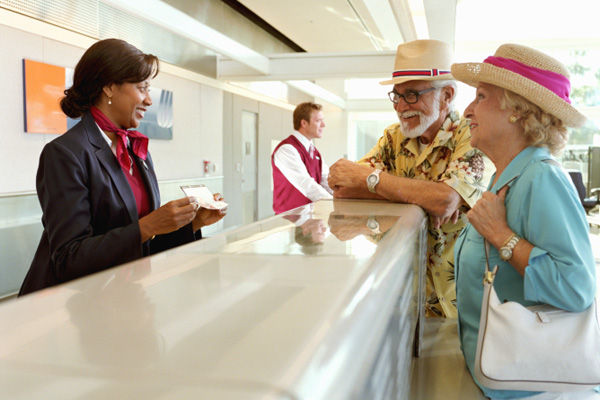Safe Travels with Diabetes

Whether you’re going on vacation or embarking on a business trip, traveling when you have diabetes requires careful planning. The tips below can help ensure that you stay safe and healthy while you’re away from home.
- Keep your diabetes supplies with you. Always make sure you have easy access to your diabetes supplies, including your medicine, insulin vials and syringes, insulin pens, pump supplies, blood glucose meter and test strips. You might be tempted to pack everything away in the trunk of your car or checked in your luggage, but you never know when you’ll need a backup. Also, never store your supplies in hot or cold temperatures; doing so can ruin your insulin and affect your meter and test strips.
- Pack snacks! If you’re on a road trip, you may be counting on stopping along the way. But remember that many stops only offer unhealthy fast foods. Or there may be long stretches of road without anywhere to stop for food. Likewise, if your train or plane is delayed, you could find yourself without food for a longer-than-expected amount of time. And if you take insulin or a sulfonylurea (a type of diabetes pill), the risk for having low blood sugar increases the longer you go without eating. When you’re on the road, pack a cooler filled with healthy options, such as fruit, veggies, yogurt, nuts, seeds or hummus. On the train or plan, stow some granola or energy bars, nuts, peanut butter or crackers in your carry-on bag.
- Inform airport security. Let the airport security agents know that you have diabetes and separate your diabetes supplies from your other items in your carry-on. It can be helpful to bring a letter from your doctor that lets airport security know that you have diabetes and that you need to carry insulin, syringes, test strips and other supplies with you. Be sure that your insulin or insulin pens and other diabetes medicines display the labels from your pharmacy. If you wear an insulin pump and/or a continuous glucose monitor (CGM), let the security agent know that you have diabetes and ask that you not have to disconnect from your device. For more information, visit the Transportation Security Administration’s website, specifically the Disabilities and Medical Conditions page at https://www.tsa.gov/travel/special-procedures.
- Consider time zone changes. Changes in time zone can wreak havoc with your insulin injections, so talk with your doctor or diabetes educator before your trip. If you wear an insulin pump, be sure to set the clock on your pump to reflect the time change.
- Plan for lows. Changes in your daily routine, food choices or activity level can increase your chances of having lows if you take insulin or sulfonylureas. Stock up on low blood sugar treatments: glucose tablets, glucose gel, juice boxes and non-chocolate candies are good choices. Don’t forget to keep treatments with you at all times.
- Check your blood sugar – often! With all of the excitement and stress around traveling, along with eating different foods, changes in activity level and time zone changes, expect to see some ups and downs in your blood sugar levels. Stay on top of these swings by checking at least several times a day and take action before your blood sugar goes too high or too low.
- See your doctor ahead of time. You might need to make some tweaks in your insulin regimen if you’ll be traveling far. If you’re going overseas you could even need vaccinations. Ask your doctor for prescription refills, a letter to get you through airport security (if needed), and the generic names of your medicines in case you need to fill a prescription while out of the country. Ask for a recommendation for a doctor, clinic or hospital to visit while abroad in the event that you become ill during your travels.
- Learn key phrases. If you’ll be traveling to a non-English speaking country, learn or write down a few key phrases ahead of time, such as “I have diabetes,” “Where is the hospital,” and “I need some juice.”
- Let people know that you have diabetes. If you’re traveling alone, it’s wise to tell the flight attendant, your travel companions and even the front desk staff at your hotel that you have diabetes. Let them know what they should do in the event of an emergency. Carry or wear a form of medical identification that states you have diabetes, and be sure to carry an emergency contact name and number with you.

